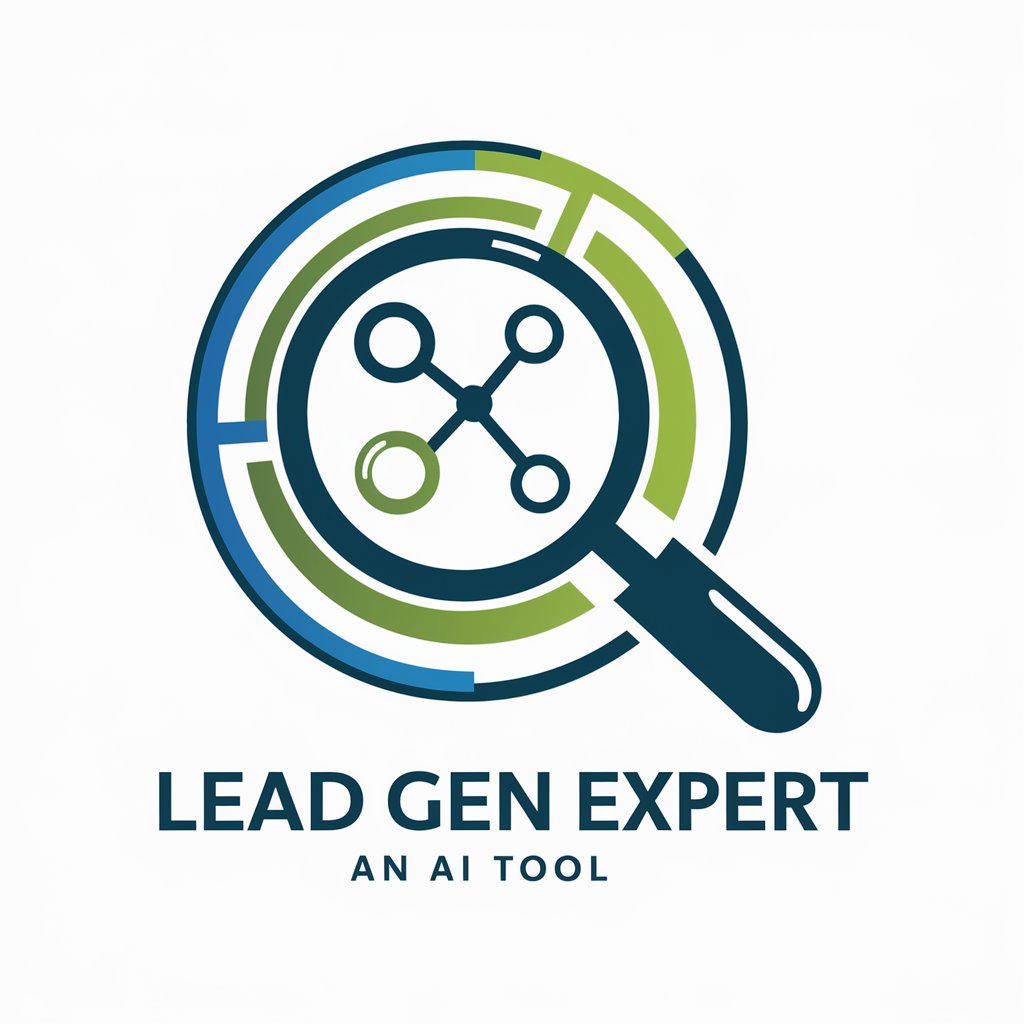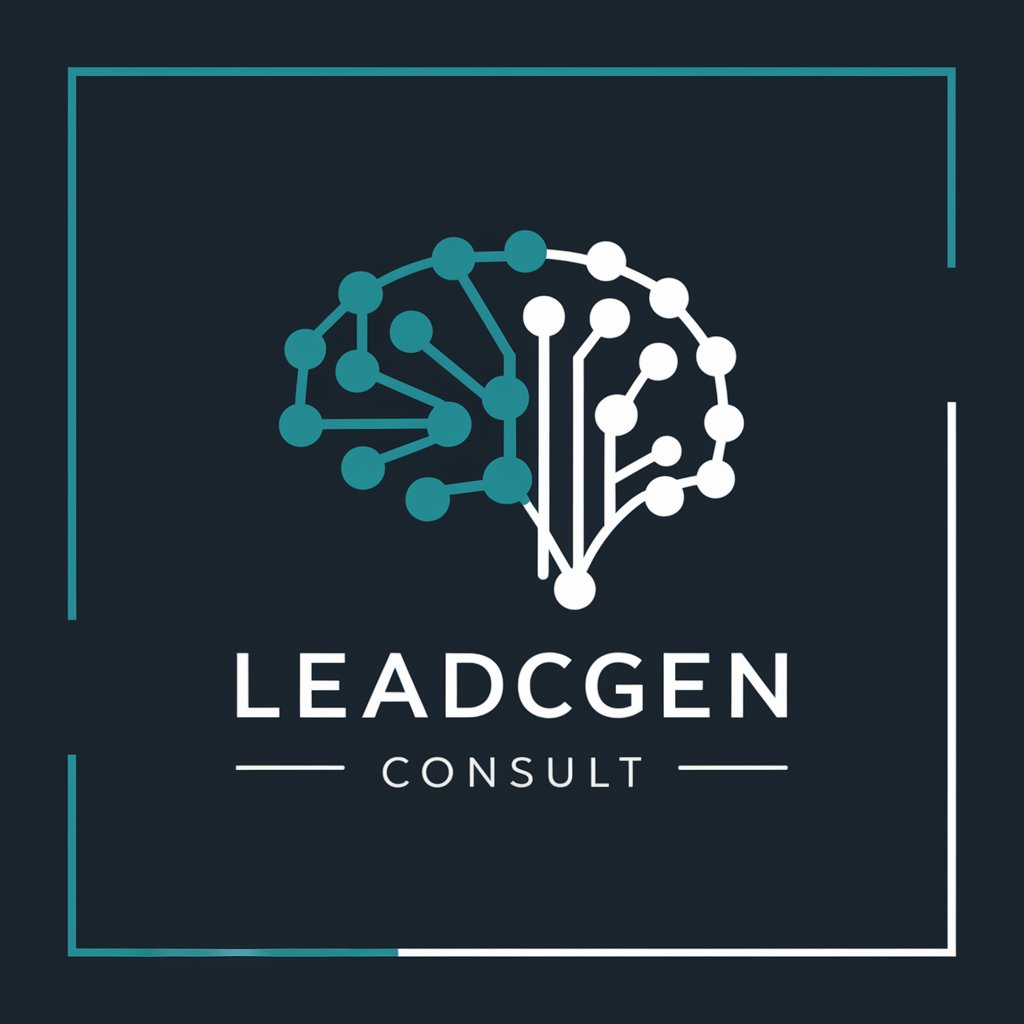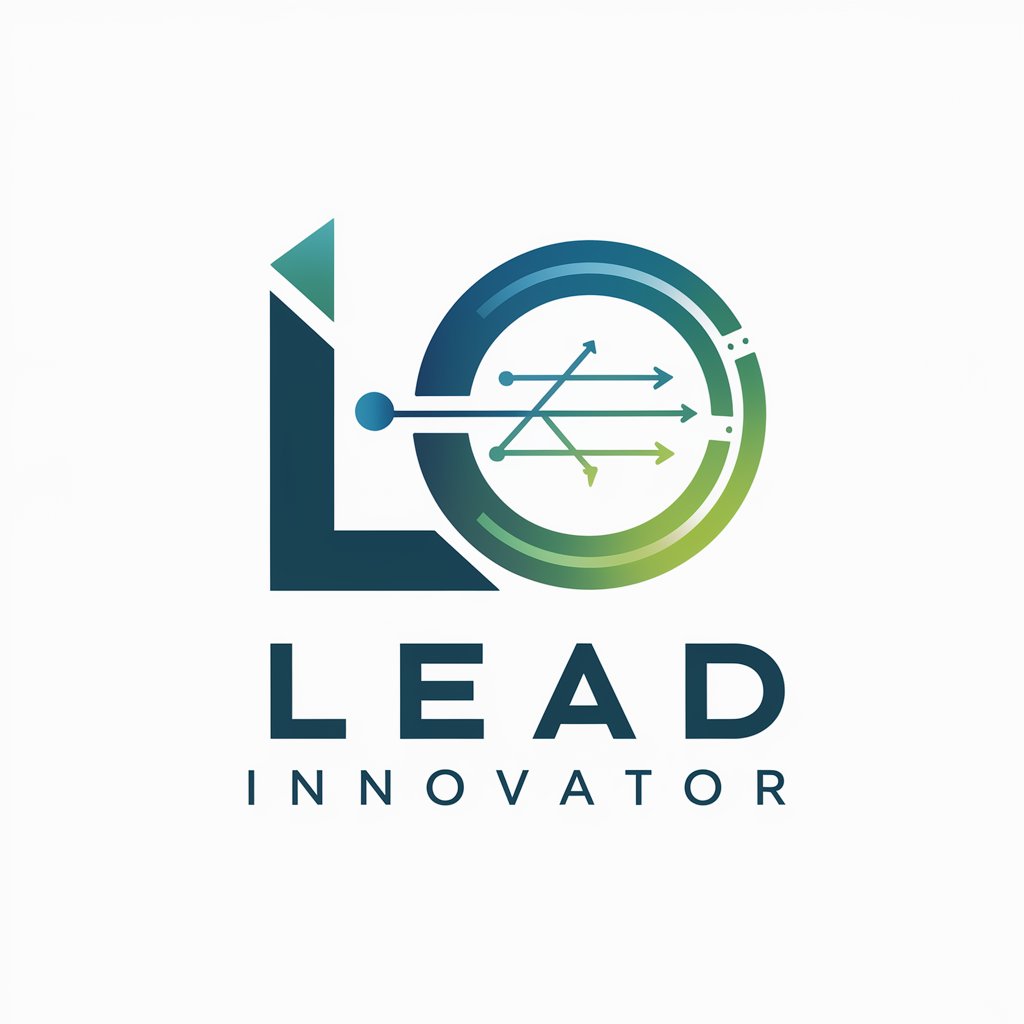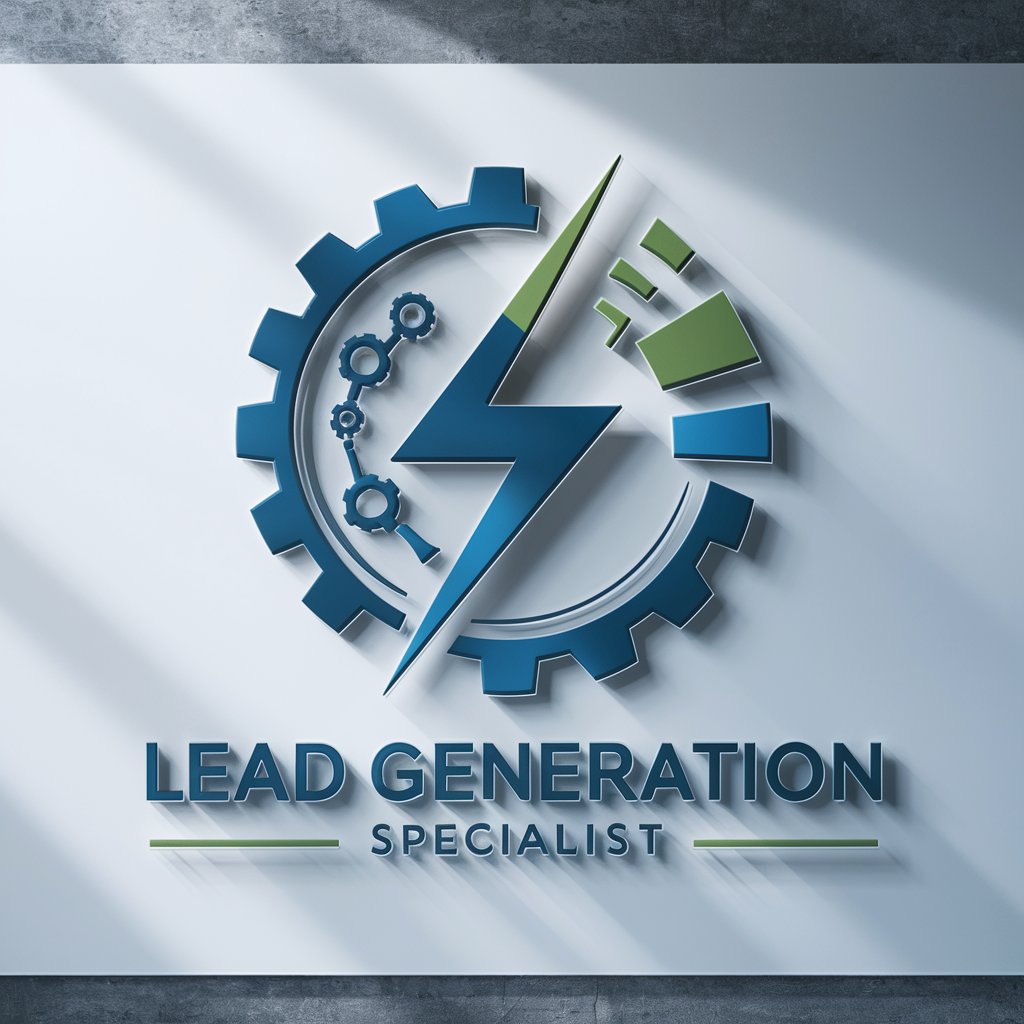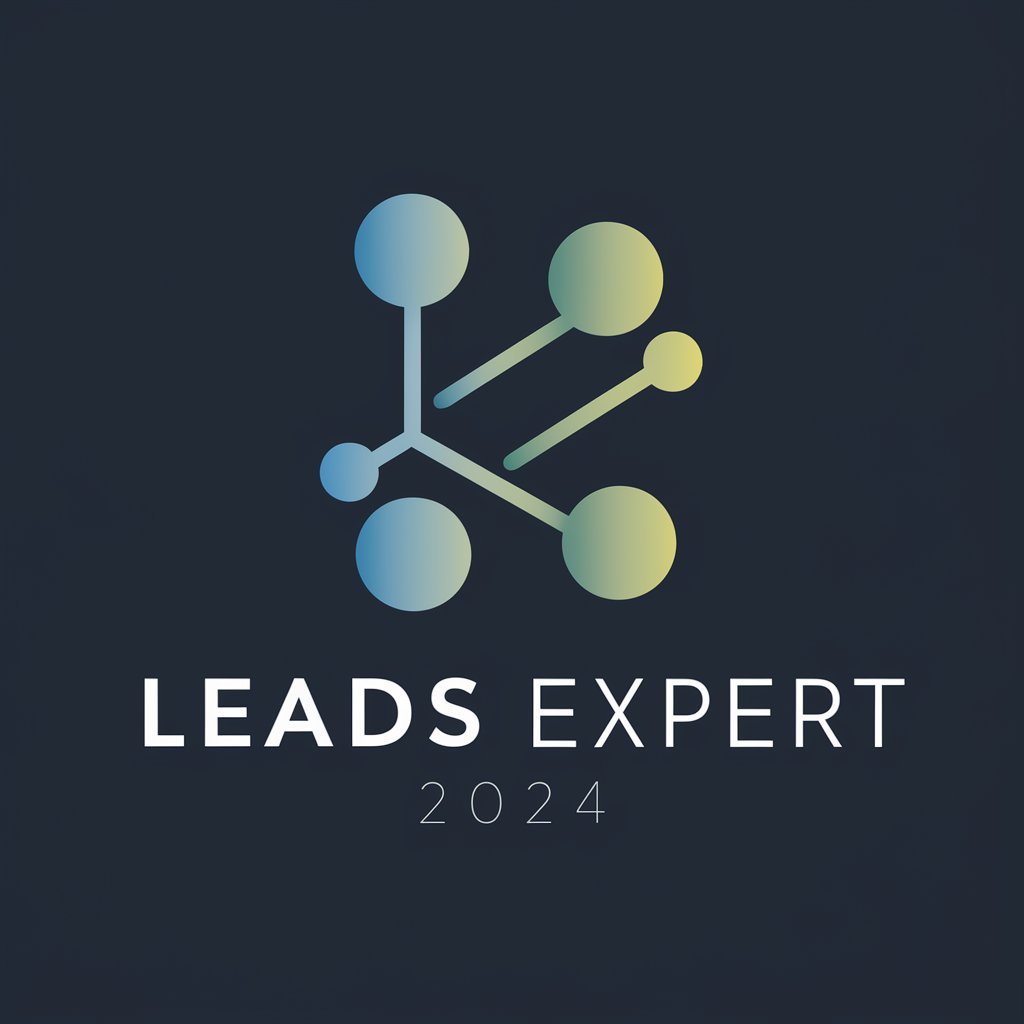
1. Lead Generation - lead generation, no login needed.

AI-powered leads for business growth.
Hello
Get Embed Code
Introduction to 1. Lead Generation
1. Lead Generation is designed to assist businesses in identifying, analyzing, and engaging potential clients or partners through a structured, AI-driven process. Its core purpose is to streamline the lead generation phase of sales, focusing on delivering targeted leads based on specific business requirements such as industry, geography, or product relevance. The system integrates advanced search capabilities, real-time data retrieval, and business logic to generate leads that are not just numerous, but also highly relevant. For example, if a technology company selling cybersecurity software wants to enter the financial services sector in the U.S., 1. Lead Generation can help by identifying potential banking and insurance firms that may be seeking cybersecurity upgrades due to recent regulations or security breaches. The system can also pinpoint specific individuals within those organizations, such as CTOs or CISOs, responsible for security decisions. This focused approach saves time and increases the chances of successful engagements. Powered by ChatGPT-4o。

Key Functions of 1. Lead Generation
Targeted Lead Identification
Example
A company selling SaaS solutions targets midsize enterprises in the healthcare industry. The system identifies healthcare providers and associated companies in the geographical region of choice, offering a list of relevant leads with contact details of decision-makers.
Scenario
A SaaS firm looking to expand its customer base in the UK healthcare sector uses 1. Lead Generation to source leads based on size, revenue, and identified pain points within the market. It then narrows down hospitals and clinics needing software upgrades or digitization.
Trigger Event Identification
Example
An industrial equipment supplier is searching for leads that might require new machinery due to recent government regulations or infrastructure expansion. The system highlights construction firms or manufacturers likely to be impacted by new laws or projects.
Scenario
A supplier of eco-friendly industrial filters uses 1. Lead Generation to identify companies affected by new environmental regulations. The system flags chemical plants and factories required to upgrade their machinery for compliance.
Geographical Lead Targeting
Example
An e-commerce company offering logistics solutions wants to focus its efforts in Southeast Asia. The system identifies leads in the logistics and transportation industry across countries like Malaysia, Thailand, and Vietnam, highlighting businesses that might need improved distribution systems.
Scenario
A logistics firm entering Southeast Asia can leverage the system to gather a list of key players in warehousing, freight, and shipping industries. This allows the firm to strategically focus its marketing and sales efforts.
Stakeholder Identification
Example
A B2B tech company aims to connect with top decision-makers in their target accounts. 1. Lead Generation identifies key individuals such as CTOs, procurement managers, or innovation heads who have influence over purchasing decisions.
Scenario
A cybersecurity firm wants to pitch its latest threat detection software to banks. Using the system, it finds the Chief Information Security Officers (CISOs) and IT directors within these institutions, optimizing outreach efforts.
Industry Opportunity Spotting
Example
A firm providing digital transformation services is looking to capitalize on industries facing increased digital demand due to recent market disruptions (e.g., retail adapting to e-commerce). The system identifies industries or companies heavily investing in digitization.
Scenario
A consulting firm providing digital transformation expertise uses the tool to spot industries experiencing shifts due to COVID-19, such as retail companies ramping up e-commerce platforms, providing an entry point for consultancy engagements.
Ideal Users of 1. Lead Generation
Sales Teams in B2B Companies
Sales teams that rely on consistent lead flow to meet targets benefit from 1. Lead Generation’s ability to rapidly deliver qualified prospects. These teams can use the system to identify decision-makers, competitors, and market gaps, making it easier to close deals faster.
Marketing Departments
Marketing teams focused on creating targeted campaigns need accurate data on potential leads. By using 1. Lead Generation, they can refine their customer personas and develop content and outreach that resonates with their audience based on real-time industry trends and opportunities.
Startups and Small Businesses
Early-stage businesses often lack the resources to invest in large-scale lead generation efforts. 1. Lead Generation offers them a cost-effective way to discover new customers and partners quickly, allowing them to allocate resources more efficiently while still driving growth.
Business Development Teams
Business development professionals seeking to form partnerships or expand into new markets can use 1. Lead Generation to uncover potential partners, clients, or even acquisition targets. This tool helps them stay proactive by identifying market trends and opportunities before competitors.
Consultants and Advisors
Consultants and advisory firms can use 1. Lead Generation to find businesses that are actively looking for solutions or guidance in their area of expertise, such as companies undergoing digital transformation, compliance challenges, or operational restructuring.

Guidelines for Using 1. Lead Generation
1
Visit yeschat.ai for a free trial without login, also no need for ChatGPT Plus.
2
Provide your company details, including the product/service you offer and the target industry, to tailor lead generation.
3
Receive a list of 5 potential leads based on your inputs, automatically generated by searching relevant databases.
4
Analyze and refine leads based on identified opportunities and trigger events for deeper insights into each prospect.
5
Continue with further lead generation or proceed with detailed lead analysis, identifying key stakeholders to target.
Try other advanced and practical GPTs
Easy image generation with MJ
AI-powered image creation for professionals

Ice cream artists
Crafting Frozen Delights with AI

Ice Cream Flavor Matchmaker
Scoop up your perfect flavor match!

ICE CREAM GENIUS
Craft Perfect Ice Cream with AI
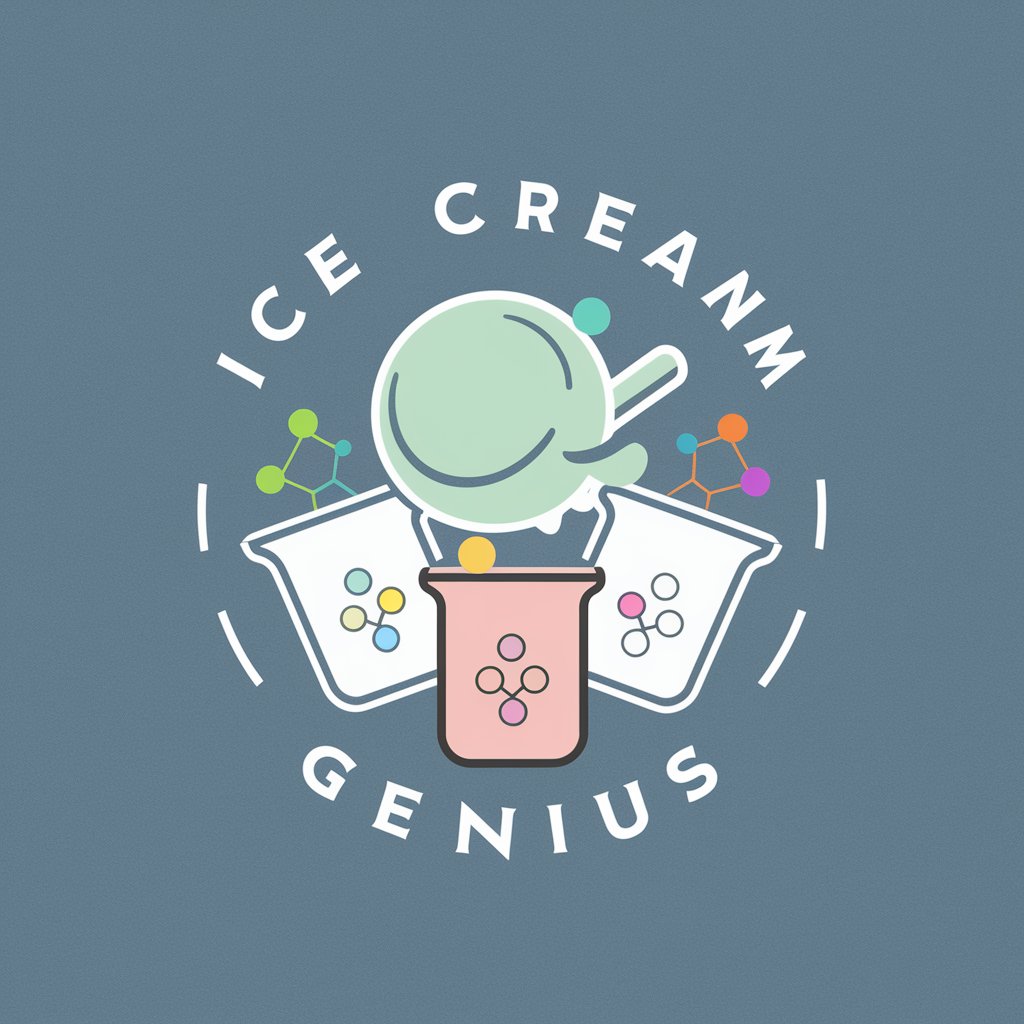
Unfamiliar Ice Cream
Craft Your Dream Ice Cream

Wealth Wisdom
Empowering financial decisions with AI

墨水含花
AI-powered traditional Chinese writing mentor.
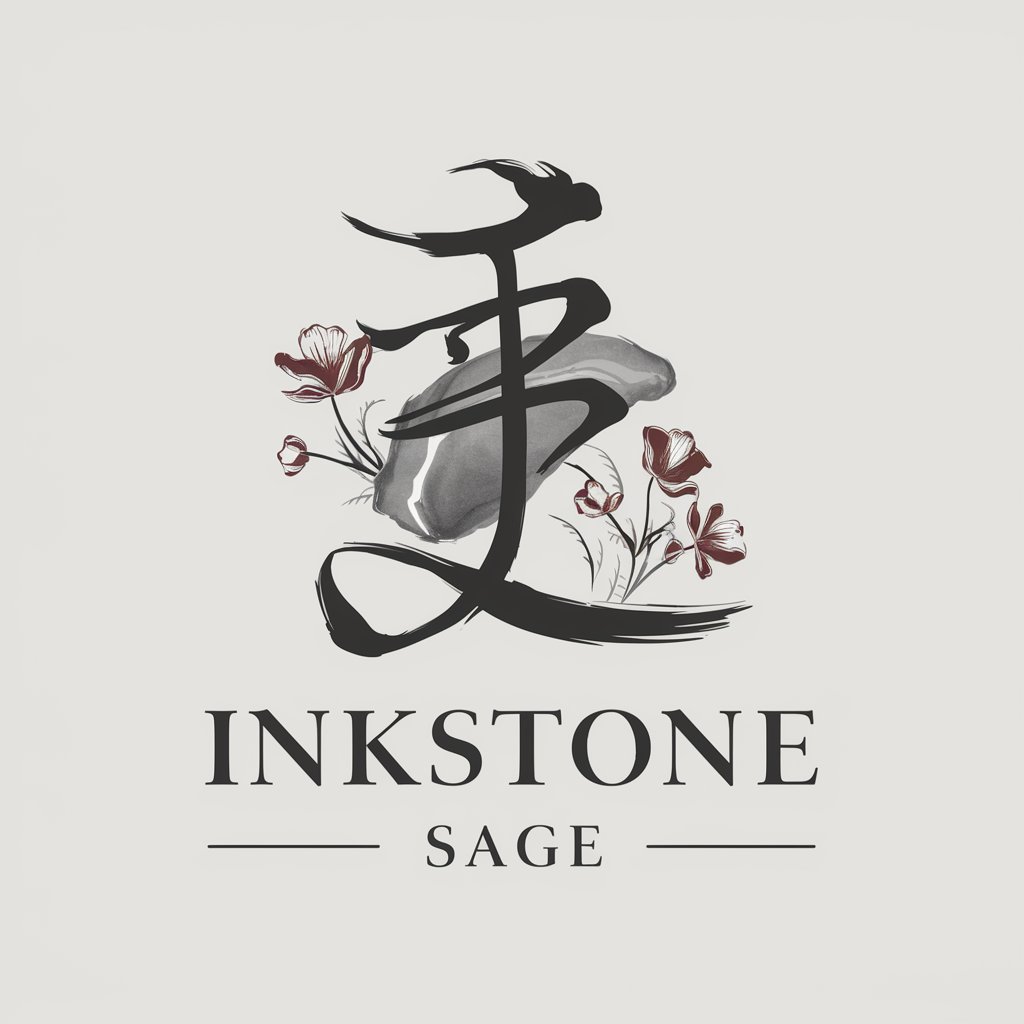
【森人間】の九星気学ナビゲーター
Navigate life's path with AI-powered astrology

時間の取説
Maximize Your Time with Drucker's Wisdom

玄人
Empowering your journey through Japanese culture and language with AI.
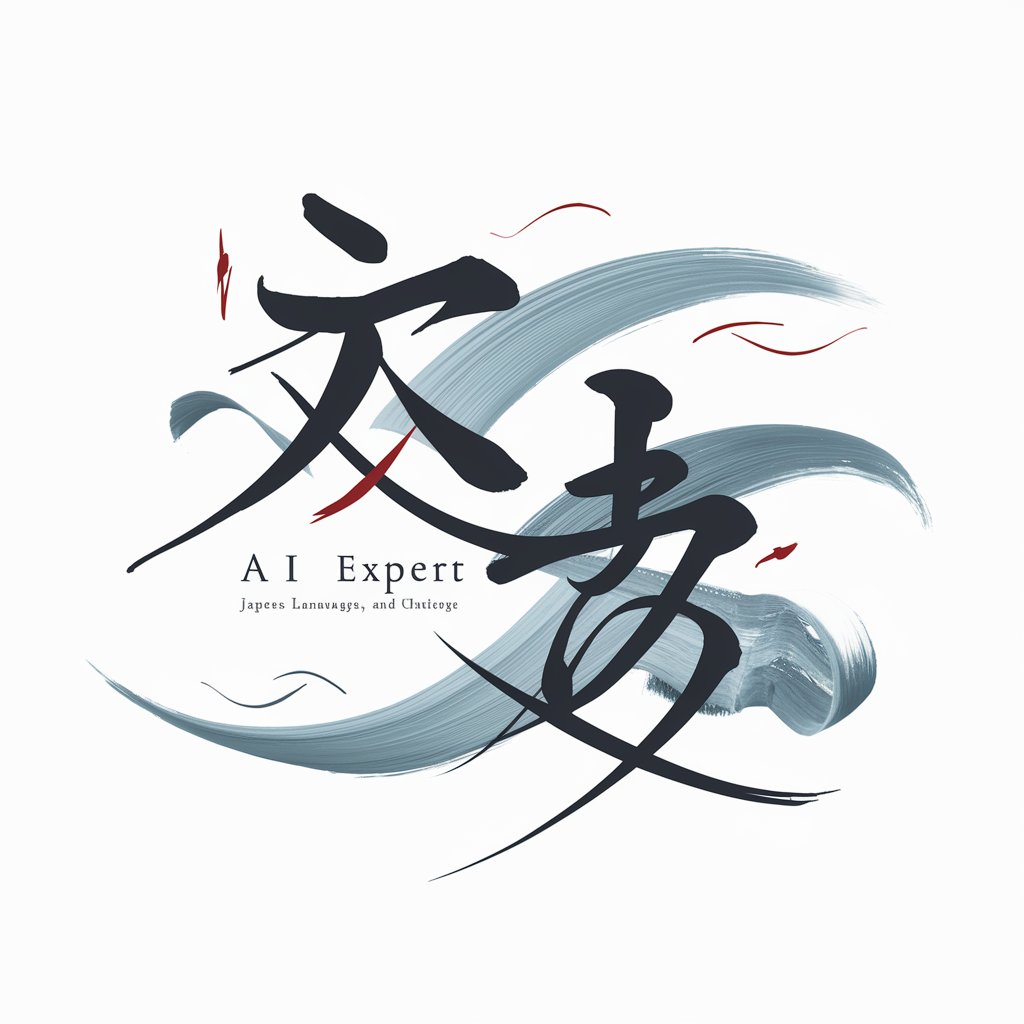
レシピ案内人
Craft recipes with AI, using what you have.
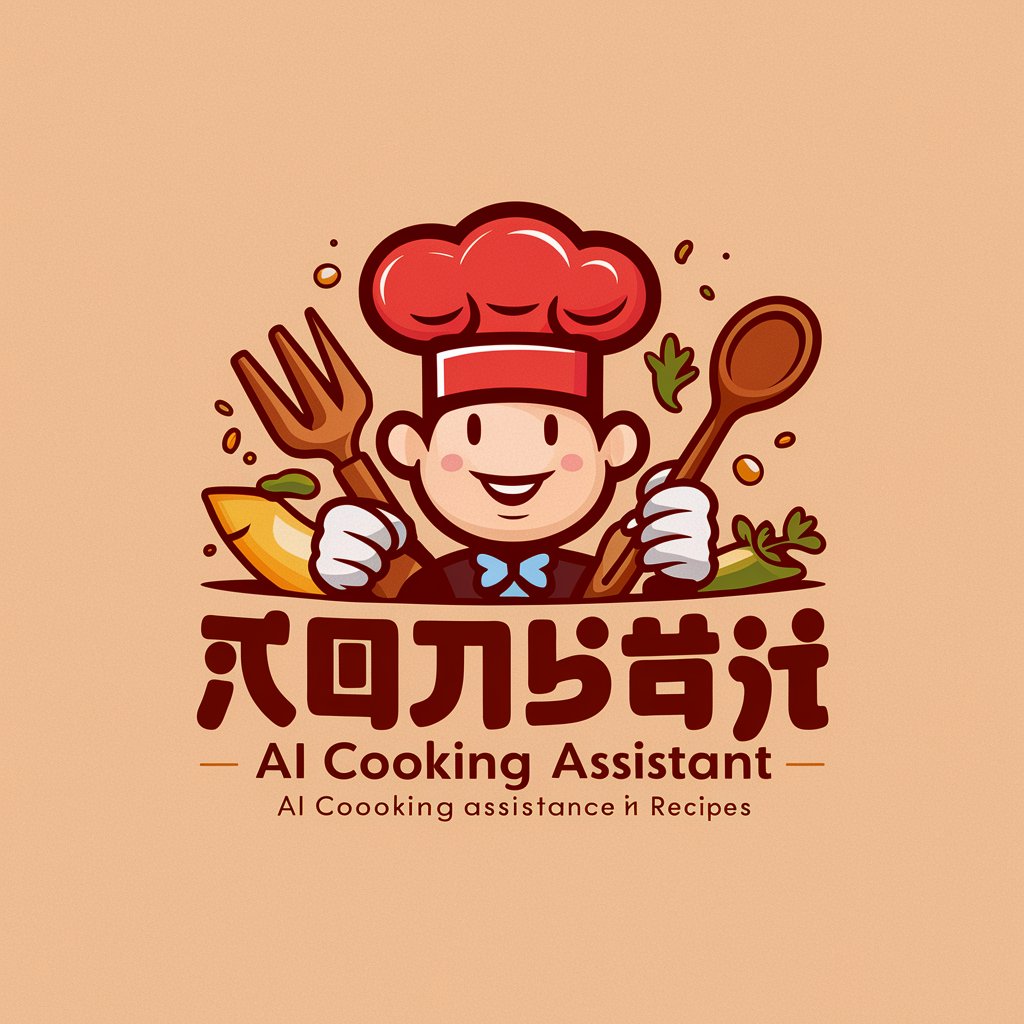
懶人包 GPT
Bringing clarity to complexity with AI
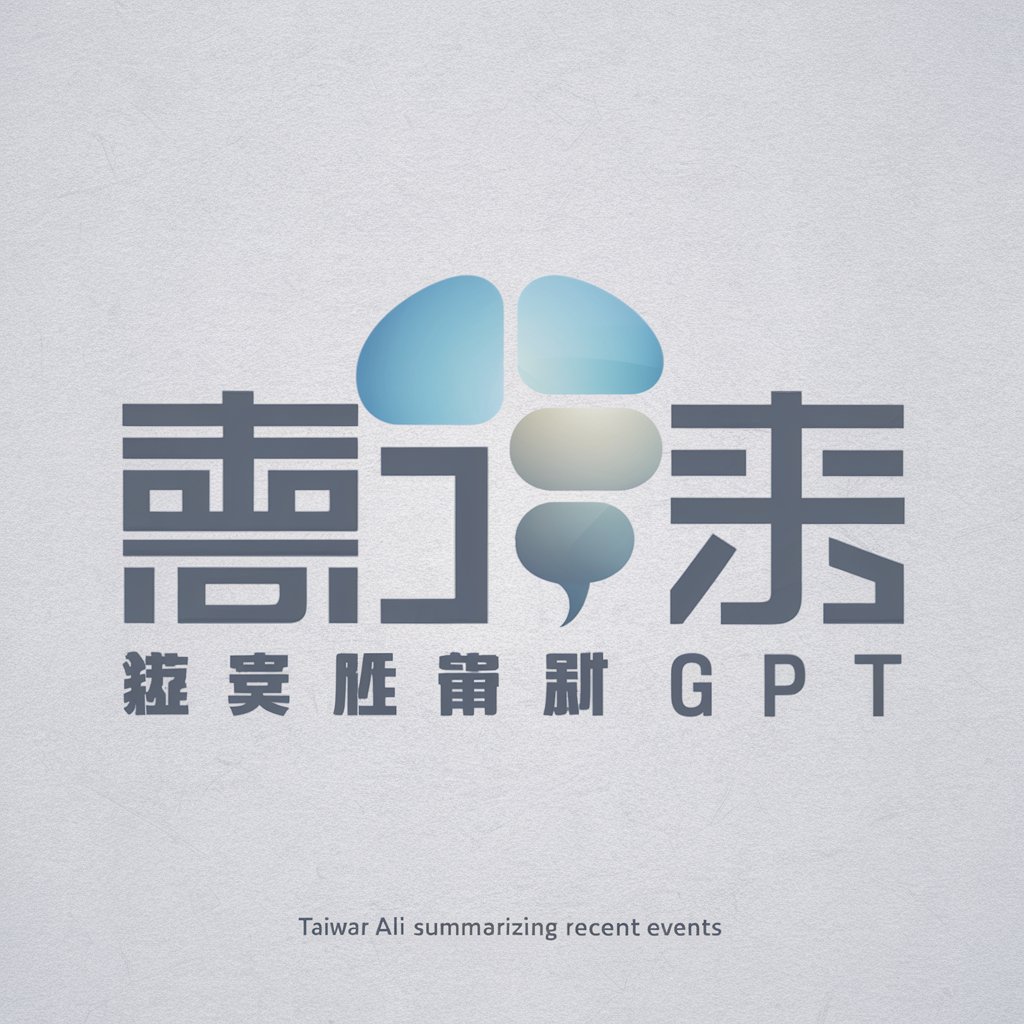
Common Questions About 1. Lead Generation
What industries can 1. Lead Generation target?
1. Lead Generation supports lead generation across various industries, including technology, healthcare, finance, manufacturing, and more. The tool can be customized to fit specific market needs by searching for companies that align with your offering.
How are the leads generated?
Leads are generated by leveraging a combination of data sources and online searches, focusing on relevant criteria like industry, geography, company size, and trigger events such as expansion or new product launches.
Can I get more than 5 leads at once?
Initially, you will receive 5 leads to evaluate. If more leads are needed, the tool allows you to generate additional leads, refining the search based on new criteria or deeper analysis of trigger events.
How are trigger events identified?
Trigger events are identified through online research, using industry-specific news, corporate announcements, or financial reports that indicate growth opportunities, market shifts, or emerging needs for your product or service.
What makes 1. Lead Generation unique?
Its ability to automate lead generation while also providing detailed insights into each lead, including trigger events and potential opportunities, makes it a comprehensive tool for targeted business growth.

